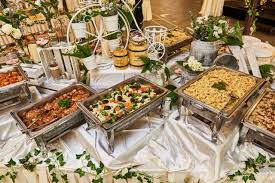Introduction
A haircut is more than just a trim; it’s a form of self-expression, a reflection of personal style, and a way to make a statement without uttering a single word. The art of cutting hair has evolved over manetain curly hair, influenced by cultural shifts, fashion trends, and individual preferences. In this article, we’ll explore the fascinating world of haircuts, examining the history, trends, and the intricate balance of art and science that goes into creating the perfect coiffure.
The Historical Evolution
The history of haircuts dates back to ancient times when both men and women used various tools to groom their hair. In ancient Egypt, for example, wigs and elaborate hairstyles were considered status symbols. The ancient Greeks and Romans also valued well-groomed hair, with barbershops becoming social hubs where people gathered to discuss current events. Throughout history, different cultures and societies have attached significance to hairstyles, often representing social status, religious beliefs, or personal identity.
The Rise of Hairstyling as an Art Form
In the 20th century, hairstyling truly began to emerge as an art form. Iconic hairstylists like Vidal Sassoon revolutionized the industry by introducing precision cuts and geometric shapes, challenging the traditional norms of long, flowing hairstyles. The punk movement of the 1970s further pushed the boundaries of hairstyling, with bold, unconventional cuts symbolizing rebellion and individuality.
The 1980s brought about a wave of experimentation with perms, mullets, and asymmetrical cuts. Celebrities like Madonna and David Bowie became trendsetters, influencing millions to adopt unique and daring hairstyles. As we moved into the 21st century, the rise of social media and celebrity culture continued to fuel the desire for ever-evolving hair trends.
The Science Behind Haircuts
While hairstyling is undoubtedly an art, it is also a science. Professional hairstylists understand the structure of hair, its growth patterns, and the impact of various cutting techniques. The choice of scissors, razors, and other tools depends on the desired outcome. Additionally, hairstylists consider face shape, hair texture, and lifestyle when crafting a haircut, ensuring it complements the individual’s features and is easy to maintain.
Trends in Modern Haircuts
The world of haircuts is dynamic, with trends constantly evolving. In recent years, there has been a resurgence of classic styles with a modern twist. Bobs, pixie cuts, and shags remain timeless choices, but with contemporary variations to suit current fashion aesthetics. Undercuts, fades, and textured layers are popular choices for those seeking a more edgy and trendy look.
The demand for sustainability and eco-friendly practices has also influenced the haircutting industry. Many salons are adopting green initiatives, using eco-friendly products and reducing water and energy consumption. Additionally, there is a growing emphasis on inclusivity, celebrating natural hair textures and embracing diverse styles that reflect the beauty of individuality.
Conclusion
From ancient civilizations to the present day, haircuts have played a significant role in shaping personal identity and reflecting societal trends. The art and science of haircuts continue to evolve, driven by a fusion of historical influences, cultural shifts, and individual expression. Whether it’s a classic bob, a bold pixie cut, or a modern take on a vintage style, the world of haircuts is a vibrant canvas where individuals can explore and express their unique personalities.


